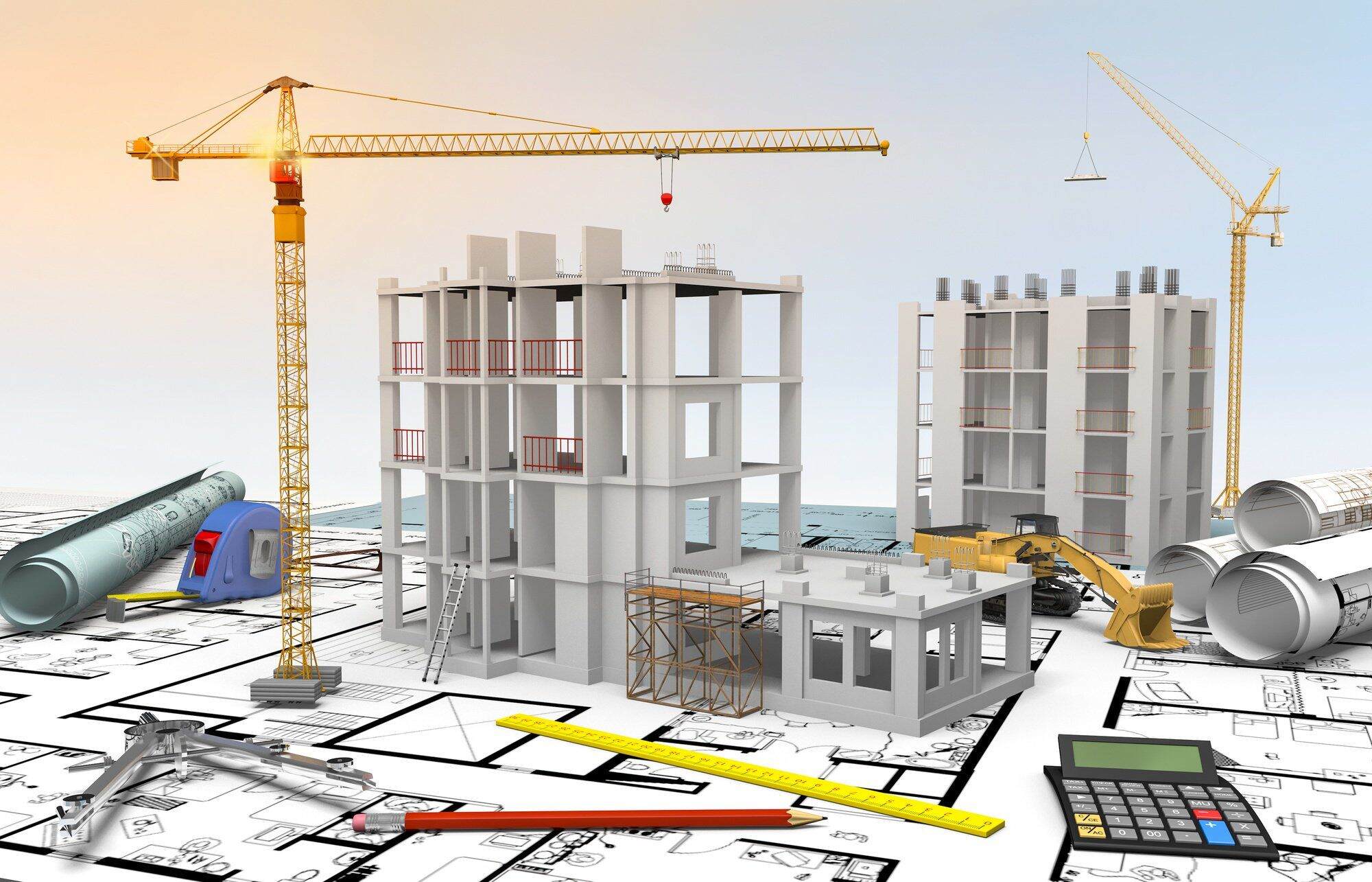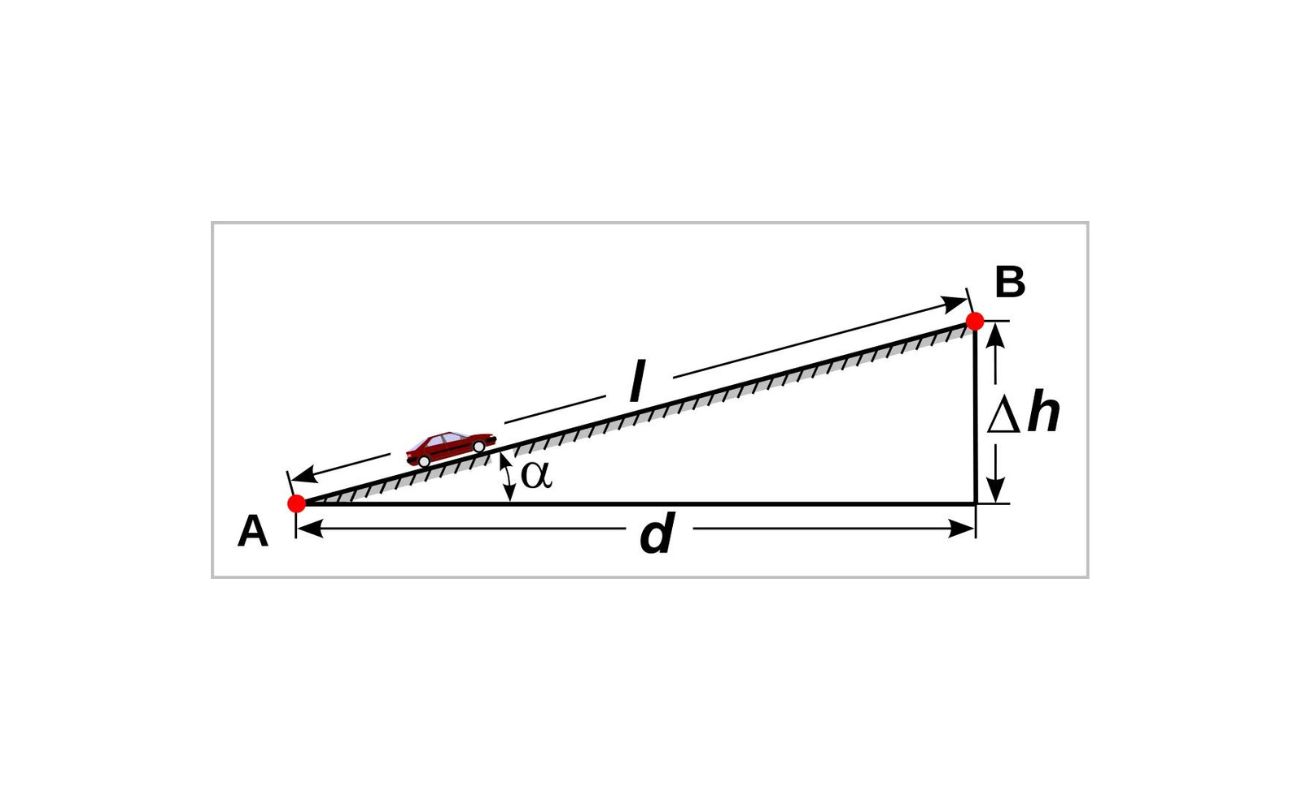Home>diy>Planning & Engineering>How Is Architecture Different From Civil Engineering


Planning & Engineering
How Is Architecture Different From Civil Engineering
Modified: May 6, 2024
Learn the key differences between architecture and civil engineering, and how planning-engineering plays a vital role in shaping the built environment.
(Many of the links in this article redirect to a specific reviewed product. Your purchase of these products through affiliate links helps to generate commission for Storables.com, at no extra cost. Learn more)
Introduction
Architecture and civil engineering are often used interchangeably as they both involve the design and construction of structures. While there may be some similarities between the two fields, they are distinct disciplines with different focuses and areas of expertise. Understanding the differences between architecture and civil engineering can help individuals make informed decisions about their career paths and educational pursuits.
Architecture can be defined as the art and science of designing and constructing buildings and other physical structures. Architects are responsible for creating aesthetically pleasing and functional spaces that meet the needs of the users. They often work closely with clients to understand their requirements and develop design concepts that reflect their vision.
Civil engineering, on the other hand, is a branch of engineering that deals with the design, construction, and maintenance of infrastructure projects. Civil engineers are primarily concerned with the structural integrity and functionality of projects like bridges, highways, dams, and airports. Their focus is on ensuring the safety and durability of these structures, as well as managing the resources, budgets, and timelines of the projects.
While both architecture and civil engineering involve the design and construction of physical structures, they differ in their approach and areas of specialization. Architects are more concerned with the aesthetics, spatial planning, and human experience of the built environment. They work on projects that range from individual residences to large-scale urban developments.
Civil engineers, on the other hand, focus on the structural and technical aspects of construction. They are involved in the analysis and design of the structural components of a building or infrastructure project to ensure its safety and functionality. Civil engineers also play a crucial role in project management, overseeing the construction process, and ensuring that everything adheres to building codes and regulations.
In terms of education and training, architects and civil engineers follow different paths. Architects typically pursue a five-year professional degree program in architecture, which includes a combination of design studios, theory courses, and technical subjects. After completing their education, architects may also choose to get licensed to practice architecture.
Key Takeaways:
- Architecture focuses on creating aesthetically pleasing and functional spaces, prioritizing the human experience and visual appeal of structures. It involves collaboration with clients and a deep understanding of various disciplines.
- Civil engineering prioritizes the technical aspects of infrastructure projects, ensuring structural integrity, safety, and functionality. It involves comprehensive planning, analysis, and management of construction projects.
Definition of Architecture
Architecture is the art and science of designing and constructing buildings and other physical structures. It encompasses a wide range of elements, including the aesthetic, functional, and experiential aspects of a structure. Architects are responsible for creating spaces that are not only visually appealing but also serve the needs of the users.
Architecture goes beyond just creating buildings. It involves considering the context, cultural significance, and sustainability of a project. Architects strive to create designs that harmonize with the surrounding environment and contribute positively to the overall urban fabric.
Architects use their creative and technical skills to transform ideas into tangible structures. They engage in a design process that includes conceptualization, planning, and execution. Architects often work closely with clients to understand their vision and requirements, and then translate those into a design that meets their needs.
In addition to aesthetics, architects also take into account the functionality and efficiency of a building. They consider factors such as space planning, circulation, and the optimal use of natural light and ventilation. Architects strive to create spaces that are not only visually appealing but also promote comfort, productivity, and well-being.
Architecture is a multidisciplinary field that requires a deep understanding of various disciplines. Architects need to have knowledge in areas such as structural engineering, construction materials, building codes and regulations, environmental sustainability, and project management.
Architectural design involves creating drawings, renderings, and 3D models to communicate design concepts to clients, contractors, and other stakeholders. Architects also collaborate with engineers, contractors, and other professionals to ensure that the design is feasible and can be successfully executed.
Ultimately, architects play a vital role in shaping the built environment. Through their designs, they create spaces that not only fulfill functional needs but also evoke emotion, inspire, and create a sense of place. Architecture has the power to transform communities and improve the quality of life for individuals.
Definition of Civil Engineering
Civil engineering is a branch of engineering that deals with the design, construction, and maintenance of infrastructure projects. It involves the planning and supervision of the construction of various structures, including buildings, bridges, roads, dams, airports, and water supply systems.
The primary focus of civil engineering is the development of safe, reliable, and sustainable infrastructure that meets the needs of society. Civil engineers apply scientific and technical knowledge to design structures and systems that can withstand environmental forces and serve their intended purpose.
One of the key roles of civil engineers is to ensure the structural integrity of the projects they work on. They analyze the loads and forces that will act on the structures and design them accordingly, taking into consideration factors such as materials, safety standards, and environmental conditions.
Civil engineers also play a significant role in the planning and design of transportation systems. They design roads, highways, and railway networks to ensure efficient and safe transportation of goods and people. Civil engineers consider factors such as traffic flow, road geometry, and the impact on the environment to create effective transportation systems.
Water resources management is another important aspect of civil engineering. Civil engineers design and construct water supply systems, drainage systems, and wastewater treatment plants to ensure the availability of clean water and proper disposal of waste. They also work on projects related to flood control, irrigation systems, and water conservation.
In addition to infrastructure projects, civil engineering also involves the management of construction projects. Civil engineers oversee the entire construction process, from planning and scheduling to procurement and quality control. They ensure that projects are completed on time, within budget, and according to the specifications.
Civil engineering requires a strong foundation in mathematics, physics, and the principles of engineering. Civil engineers must have a deep understanding of materials, structural analysis, geotechnical engineering, transportation planning, and construction methods.
With advancements in technology, civil engineering is also becoming increasingly focused on sustainability. Civil engineers strive to create infrastructure that minimizes environmental impact, reduces energy consumption, and utilizes sustainable materials and construction techniques.
Overall, civil engineering is a diverse and vital discipline that contributes to the development and maintenance of infrastructure essential for society’s functioning. Civil engineers play a crucial role in shaping the physical environment and improving the quality of life for people around the world.
Education and Training
The education and training paths for architecture and civil engineering differ slightly due to the unique demands of each field. Here is an overview of the typical educational requirements and training processes for aspiring architects and civil engineers:
Architecture:
To become an architect, individuals generally pursue a professional degree in architecture. The most common degree is the Bachelor of Architecture (B.Arch.), which typically takes five years to complete. Some universities also offer a two-year Master of Architecture (M.Arch.) program for students who already hold a bachelor’s degree in a related discipline.
Architecture programs emphasize a combination of design studios, theory courses, and technical subjects. Students learn about architectural history, construction materials, building systems, sustainability, and computer-aided design (CAD) software. They also engage in hands-on design projects that allow them to develop their creative and problem-solving skills.
After completing their formal education, aspiring architects are often required to gain practical experience through internships or apprenticeships. This period, known as the Architectural Experience Program (AXP), allows individuals to work under the supervision of licensed architects and acquire the necessary skills and knowledge in a professional setting.
Once the required experience is obtained, aspiring architects must pass the Architect Registration Examination (ARE) to become licensed. The ARE consists of multiple divisions, covering topics such as site planning, construction documents, structural systems, and building systems. Upon successful completion of the exam, architects are granted their professional license, allowing them to practice independently.
Civil Engineering:
To become a civil engineer, individuals typically pursue a bachelor’s degree in civil engineering from an accredited university program. Some universities also offer master’s and doctoral programs for those who wish to further specialize in specific areas of civil engineering.
Civil engineering programs cover a range of subjects, including mathematics, physics, structural analysis, geotechnics, transportation engineering, and environmental engineering. Students gain a solid foundation in engineering principles and learn how to apply them to real-world projects.
In addition to the classroom education, civil engineering students often participate in laboratory experiments and fieldwork to gain practical experience. Many programs also offer co-operative education opportunities, where students can work on construction sites or in engineering firms to gain hands-on experience.
After completing their degree, aspiring civil engineers may be required to obtain professional licensure. Licensure requirements vary by country and state, but generally involve passing the Fundamentals of Engineering (FE) exam and acquiring a certain amount of engineering experience under the supervision of a licensed professional engineer. This is followed by the Principles and Practice of Engineering (PE) exam, which focuses on the specific discipline of civil engineering. Once licensed, civil engineers can work independently and take on projects requiring their expertise.
Continuing education is also important for both architects and civil engineers to stay updated with the latest advances in their respective fields. This can be achieved through attending conferences, workshops, and professional development courses.
Design and Planning Process
The design and planning process in architecture and civil engineering involves the conceptualization, development, and execution of a project. While the overall process shares some similarities between the two fields, there are distinct differences in their approaches. Here is an overview of the design and planning process for architecture and civil engineering:
Architecture:
In architecture, the design and planning process begins with the exploration of ideas and the development of design concepts. Architects work closely with clients to understand their goals, requirements, and aesthetic preferences. This initial phase often involves site analysis, research, and the creation of design sketches and renderings to communicate ideas.
Once the design concept is approved, architects move on to the detailed design phase. This involves translating the design concept into technical drawings and specifications. Architects use computer-aided design (CAD) software to create precise floor plans, elevations, sections, and other construction documents. They also collaborate with engineers and other professionals to ensure that the design meets structural, electrical, and mechanical requirements.
During the planning process, architects consider various factors such as zoning regulations, building codes, environmental impact, and accessibility requirements. They create designs that are not only visually appealing but also functional, sustainable, and compliant with local regulations. Architects may also conduct feasibility studies and cost estimations to assess the practicality and financial viability of the project.
Throughout the design and planning process, architects continuously refine and iterate their designs based on feedback from clients, engineers, and other stakeholders. This collaborative approach ensures that the final design meets the vision and objectives of the project while considering practical constraints.
Civil Engineering:
In civil engineering, the design and planning process focuses on the technical aspects of the project. Civil engineers analyze the site conditions, environmental factors, and client requirements to develop a design that ensures safety, functionality, and feasibility.
The planning process in civil engineering begins with a comprehensive site assessment to evaluate factors such as soil composition, topography, and drainage. Engineers then develop preliminary designs that consider the project’s purpose, load requirements, and structural stability. They also consider the potential impact on the surrounding environment and communities.
Once the preliminary design is approved, civil engineers move on to the detailed design phase. This involves creating structural drawings, calculations, and specifications that detail the materials, dimensions, and construction methods. Engineers use specialized software and modeling tools to analyze the structural integrity, stability, and load-carrying capacity of the design.
During the planning process, civil engineers collaborate with architects, surveyors, and other professionals to ensure that the design integrates with the overall project requirements. They also work closely with stakeholders, such as government agencies and utility companies, to obtain permits and address any regulatory considerations.
Throughout the design and planning process, civil engineers conduct cost estimations, risk assessments, and constructability analyses to ensure that the project is financially viable and can be executed efficiently.
In both architecture and civil engineering, the design and planning process involves constant communication and collaboration among various stakeholders. The iterative nature of the process allows for adjustments and improvements to the design, ensuring that the final result meets the client’s requirements and adheres to technical standards.
Architecture focuses on the design and aesthetic aspects of buildings, while civil engineering deals with the structural and technical aspects of construction. Architects design the overall look and feel of a building, while civil engineers ensure its stability and functionality.
Structural Design and Analysis
Structural design and analysis are critical components in both architecture and civil engineering. However, the focus and approach to structural design differ based on the specific requirements and scope of the project. Here is an overview of structural design and analysis in architecture and civil engineering:
Architecture:
In architecture, structural design plays a crucial role in ensuring the stability and safety of a building. Architects collaborate with structural engineers to design load-bearing elements, such as columns, beams, and foundations, that support the weight of the structure.
The structural design process in architecture involves determining the loads and forces that the structure will experience, such as gravity, wind, and seismic forces. Architects and engineers work together to select appropriate materials and construction methods that can withstand these forces while achieving the desired aesthetic and functional goals.
Architects consider structural factors during the conceptualization and development of the design. The overall form, shape, and layout of the building can have an impact on its structural stability. Architects also work closely with engineers to integrate structural elements into the design seamlessly, ensuring that they complement the overall aesthetics of the building.
Structural analysis in architecture involves the use of computer software and calculations to assess the behavior and performance of the structure. This analysis helps architects and engineers identify any design flaws or potential structural issues early in the design process. It also allows them to optimize the design for structural efficiency and cost-effectiveness.
Civil Engineering:
In civil engineering, structural design and analysis are typically applied to infrastructure projects such as bridges, highways, and dams. Civil engineers are responsible for designing structures that can support heavy loads, withstand environmental forces, and ensure the safety of the public.
The structural design process in civil engineering involves determining the structural requirements based on the purpose and function of the project. Engineers analyze the anticipated loads, such as traffic, water, or soil pressure, and design the structure to safely distribute these loads to the ground or other supporting elements.
Structural analysis in civil engineering is an essential step to verify the integrity and stability of the design. Engineers utilize mathematical modeling techniques and advanced software programs to simulate and predict how the structure will behave under different conditions and loads. This analysis helps identify potential weaknesses, failure modes, and deformations that may occur in the structure.
Civil engineers also consider factors such as geotechnical conditions, material selection, and construction techniques to ensure the long-term durability and performance of the structure. They work closely with professionals in other disciplines, such as geotechnical engineers and hydrologists, to gather important data and incorporate it into the structural design and analysis process.
Ultimately, both architecture and civil engineering rely on structural design and analysis to create safe and functional structures. While architects focus on integrating structural elements seamlessly into the overall design, civil engineers prioritize the structural integrity and performance of the project, often working on larger-scale infrastructure projects with complex loads and considerations.
Construction and Project Management
Construction and project management are integral parts of both architecture and civil engineering. They involve overseeing the implementation and execution of design plans, ensuring that projects are completed successfully and within budget. Here is an overview of construction and project management in architecture and civil engineering:
Architecture:
In architecture, construction management involves coordinating and supervising the construction process to ensure that the design is translated into a physical structure as envisioned. Architects may work closely with construction managers, contractors, and subcontractors to ensure that the project is executed according to the design specifications.
During the construction phase, architects may visit the construction site regularly to inspect the progress of the work. They may review construction drawings and documents to resolve any discrepancies or issues that arise during construction. Architects also collaborate with contractors to make any necessary adjustments or modifications to the design, taking into account site conditions or unforeseen challenges.
In addition to construction management, architects often play a role in overseeing the project budget and schedule. They collaborate with clients and contractors to establish realistic timelines and ensure that the project stays within the allocated budget. Architects may also coordinate with suppliers and vendors to procure materials and products that meet the design requirements.
Civil Engineering:
In civil engineering, project management encompasses a broader range of responsibilities. Civil engineers are involved in managing all aspects of a project, from the initial planning and design phase to the construction and final delivery. They oversee the implementation of engineering designs and ensure that construction activities adhere to technical specifications and safety standards.
Civil engineers may work closely with various stakeholders, including architects, contractors, subcontractors, and government agencies. They collaborate with architects and other professionals during the design phase to ensure that the design is constructible, efficient, and meets the project objectives.
During the construction phase, civil engineers monitor the progress of the work, making sure that the construction is proceeding as planned and that the design intent is being met. They address any issues or challenges that arise during construction and coordinate with contractors to find suitable solutions.
Civil engineers also play a pivotal role in managing project resources, including cost and time. They develop project schedules, estimate costs, and monitor expenses to ensure that the project remains within budget and is completed on time. They may also be responsible for procuring materials and equipment necessary for construction.
Furthermore, civil engineers are responsible for ensuring that construction activities adhere to safety and regulatory standards. They monitor compliance with building codes and regulations, conduct regular site inspections, and address any potential safety concerns.
Overall, both architecture and civil engineering professionals are involved in construction and project management. While architects primarily focus on managing the construction process and ensuring adherence to the design, civil engineers have a broader scope, overseeing the entire project from start to finish, including planning, design, construction, and delivery.
Roles and Responsibilities
The roles and responsibilities of professionals in architecture and civil engineering can vary based on the specific project and the stage of development. While there may be some overlap between the two fields, each discipline has distinct areas of expertise. Here is an overview of the roles and responsibilities of architects and civil engineers:
Architects:
Architects are responsible for creating designs that meet the aesthetic, functional, and experiential needs of clients and users. Their roles and responsibilities include:
- Developing design concepts and translating them into detailed drawings and specifications.
- Collaborating with clients to understand their requirements, budget constraints, and design preferences.
- Ensuring that the design complies with local regulations, zoning codes, and accessibility standards.
- Integrating structural and mechanical systems into the design, working closely with engineers and consultants.
- Creating visual representations of the design through sketches, renderings, and 3D models.
- Overseeing the construction process to ensure that the design intent is maintained and any necessary modifications are made.
- Managing the project budget, timelines, and resources to ensure successful project completion.
- Coordination with contractors, subcontractors, and suppliers to procure materials and products that meet design requirements.
Civil Engineers:
Civil engineers are responsible for the design, construction, and maintenance of infrastructure projects. Their roles and responsibilities include:
- Analyzing and assessing the feasibility of infrastructure projects, considering factors such as environmental impact, geotechnical conditions, and regulatory requirements.
- Designing and analyzing the structural components of infrastructure projects, ensuring safety and functionality.
- Collaborating with architects and other professionals during the design phase to ensure constructibility and adherence to project objectives.
- Creating detailed engineering drawings, calculations, and specifications for construction.
- Overseeing the construction process, coordinating with contractors and subcontractors to ensure adherence to design and specifications.
- Monitoring the progress of construction, conducting inspections, and addressing any issues or challenges that arise.
- Managing project resources, such as budget, schedule, and procurement of materials and equipment.
- Reviewing and evaluating the performance of infrastructure systems, conducting maintenance and repairs as needed.
While architects and civil engineers may collaborate closely on projects, they have distinct roles and areas of expertise. Architects focus on the aesthetics and functionality of the built environment, while civil engineers prioritize the structural integrity and technical aspects of infrastructure projects. Together, they work to create safe, functional, and visually appealing structures that meet the needs of society.
Job Opportunities and Career Paths
Both architecture and civil engineering offer a wide range of job opportunities and career paths. Professionals in these fields can pursue various roles in the private sector, government agencies, or work as independent consultants. Here is an overview of the job opportunities and career paths in architecture and civil engineering:
Architecture:
Architects can find employment in architectural firms, design studios, construction companies, and government agencies. Some architects choose to work as independent consultants or start their own architectural practices. Here are some common job titles and career paths in architecture:
- Architectural Designer: Involved in the early stages of the design process, creating concept drawings and 3D models.
- Project Architect: Responsible for managing and coordinating the design and construction process of a project, ensuring that it meets the client’s requirements.
- Interior Designer: Specializes in the design and planning of interior spaces, considering factors such as aesthetics, functionality, and user experience.
- Urban Planner: Focuses on the design and development of urban areas, considering factors such as land use, transportation, and sustainability.
- Architectural Technologist: Assists architects in the technical aspects of design and construction, creating detailed drawings and specifications.
- Principal/Partner: Experienced architects who hold leadership positions in architectural firms, responsible for managing client relationships, business development, and overall project outcomes.
Civil Engineering:
Civil engineers have a diverse range of career opportunities in construction companies, engineering consulting firms, government agencies, and research institutions. Some civil engineers may choose to specialize in specific areas such as structural engineering, geotechnical engineering, transportation engineering, or environmental engineering. Here are some common job titles and career paths in civil engineering:
- Structural Engineer: Specializes in the analysis and design of buildings, bridges, and other structures.
- Transportation Engineer: Focuses on the design and planning of transportation systems, including roads, highways, and railways.
- Geotechnical Engineer: Specializes in the analysis and design of foundations and underground structures, considering soil conditions and stability.
- Water Resources Engineer: Involved in the design and management of water supply systems, wastewater treatment, and flood control projects.
- Construction Manager: Oversees the construction process, managing contractors, schedules, and budgets.
- Environmental Engineer: Addresses environmental issues related to construction projects, including pollution control, sustainability, and waste management.
- Principal/Project Manager: Experienced civil engineers who hold leadership positions, responsible for managing projects, client relationships, and overall project success.
Both architecture and civil engineering offer opportunities for professional growth and advancement. As architects and civil engineers gain experience, they can take on more complex and challenging projects, mentor junior staff, or move into management or leadership positions within their respective fields.
Continuing education is essential for architects and civil engineers to stay updated with the latest trends, technologies, and regulations. Professionals can participate in workshops, seminars, and industry conferences to expand their knowledge and enhance their skills.
Furthermore, some architects and civil engineers also pursue additional certifications and licensures to demonstrate their expertise in specialized areas. These certifications can provide a competitive edge and open up more job opportunities.
Overall, architecture and civil engineering offer diverse career paths with opportunities for creativity, innovation, and impact. Professionals in these fields have the chance to shape the built environment, contribute to sustainable development, and improve the quality of life for individuals and communities.
Conclusion
Architecture and civil engineering are distinct disciplines that play vital roles in shaping the built environment. While they share some similarities, they have different focuses, areas of expertise, and career paths. Understanding the differences between architecture and civil engineering is essential for individuals considering a career in either field.
Architecture involves the art and science of designing aesthetically pleasing and functional structures that meet the needs of users. Architects create spaces that inspire, evoke emotion, and contribute to the overall visual appeal of the built environment. They prioritize the aesthetics, spatial planning, and human experience of structures.
Civil engineering, on the other hand, focuses on the design, construction, and maintenance of infrastructure projects. Civil engineers prioritize the technical aspects of the built environment, ensuring the structural integrity, safety, and functionality of structures. They play a crucial role in the planning, analysis, and implementation of infrastructure projects.
The educational paths to becoming an architect or civil engineer differ slightly. Architects typically pursue a professional degree in architecture, while civil engineers obtain a bachelor’s degree in civil engineering. Both fields may require additional licensure or certification depending on the country or state of practice.
The design and planning process in architecture and civil engineering also have some similarities but differ in their approach. Architects focus on the aesthetic and experiential aspects of design, while civil engineers prioritize the technical and structural elements. Both disciplines involve collaboration, iteration, and coordination among various stakeholders.
Roles and responsibilities vary between architecture and civil engineering. Architects focus on creating and refining designs, collaborating with clients, and managing the construction process. Civil engineers are responsible for the technical design, structural analysis, and overseeing the construction and implementation of projects.
Both architecture and civil engineering offer a wide range of job opportunities and career paths. Architects can pursue roles such as architectural designer, project architect, or principal, while civil engineers can specialize in areas such as structural engineering, transportation engineering, or environmental engineering.
In conclusion, architecture and civil engineering are indispensable fields that contribute to the development and improvement of the built environment. Whether designing stunning structures or ensuring the safety of infrastructure projects, professionals in these fields have the opportunity to shape communities, improve lives, and leave a lasting impact on the world.
Curious about how projects transition from blueprint to reality? Our next read on construction management is a must. This guide delves into the methods that ensure building projects are executed efficiently, from initial conception to final completion. Mastering these strategies can prove invaluable whether you're planning a career in this field or simply want to understand the complexities behind constructing the spaces we live and work in.
Frequently Asked Questions about How Is Architecture Different From Civil Engineering
Was this page helpful?
At Storables.com, we guarantee accurate and reliable information. Our content, validated by Expert Board Contributors, is crafted following stringent Editorial Policies. We're committed to providing you with well-researched, expert-backed insights for all your informational needs.














0 thoughts on “How Is Architecture Different From Civil Engineering”